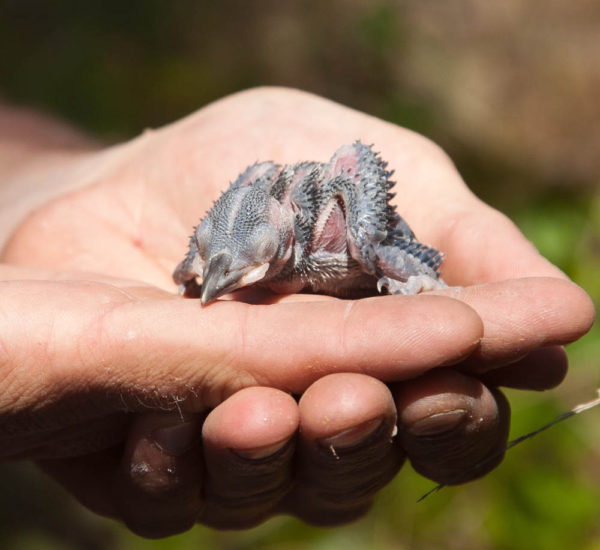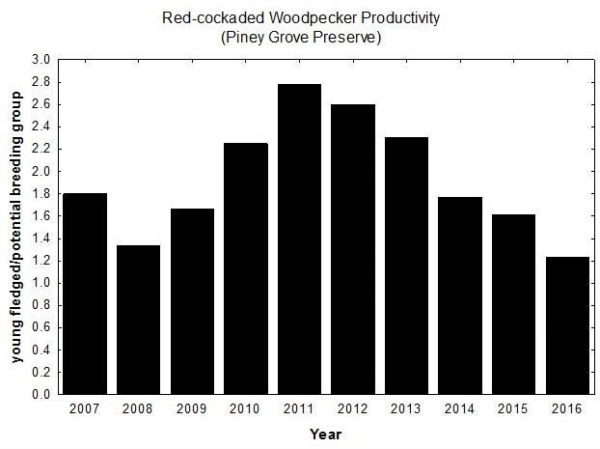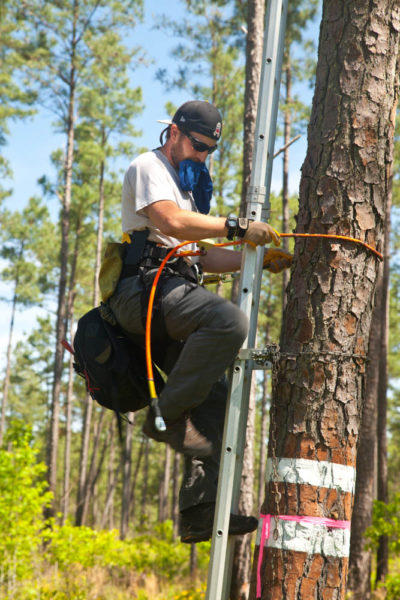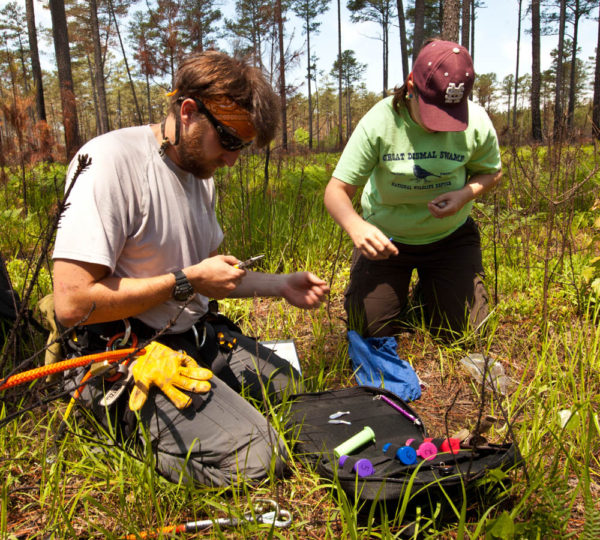Spring weather dampens woodpecker season

GSM/GPS Transmittered Bald Eagle Locations 9/21/2016
September 27, 2016Peregrines and Bridges
September 30, 2016
The 2016 spring season was challenging for both birds and biologists. The consistent rain throughout the heart of the breeding season appeared to have an impact on breeding performance for many species throughout the mid-Atlantic region. Bald eagles had small broods, osprey in the lower Chesapeake Bay had a very high failure rate, and peregrines had both small broods and a high failure rate. Red-cockaded woodpeckers did not escape the impact with the lowest reproductive output in recent memory. In terms of productivity, this year is comparable to the 2008 breeding season.

A single young woodpecker from cluster 18 in Piney Grove Preserve. This young nearly made it to fledging age but was found dead in the nest cavity later in the season. The wet and cool weather made brood rearing difficult for many species. Photo by Bryan Watts.
Eight woodpecker pairs produced 16 birds to fledging age, including 11 females and 5 males. Three additional pairs made breeding attempts but produced no young. Additional pairs were present within the site but did not attempt breeding. No four-chick broods were produced in 2016. Three pairs produced three-chick broods, two pairs produced two-chick broods and three pairs produced single chicks. Despite low productivity during the breeding season, woodpeckers within Piney Grove Preserve continue to hold their own. We can only hope that productivity will rebound in 2017.

Woodpecker reproductive rates over the past ten years within the Piney Grove Preserve. The 2016 season had the poorest showing in several years. Data from CCB.
Four birds remained within the Great Dismal Swamp National Wildlife Refuge during the spring of 2016. All birds were released into the site during the fall of 2015. Retained birds included three females and a single male. The single male was paired with a female and the young couple prepared and maintained a nesting cavity through the spring, but eggs were never documented. Additional birds will be moved into the refuge during the fall of 2016 to bolster the population with the hope of producing the first breeding attempts in 2017.

Mark Pavlovski descends down climbing ladders carrying young woodpeckers in a cloth bag for banding. The brood was banded, processed, and placed back in the cavity in short order. Photo by Bryan Watts.

Mark Pavloskiy (left) and Kelly Morris (right) process a brood of woodpeckers within the Piney Grove Preserve. Marking individual woodpeckers with color bands allows individuals to be tracked through time within the preserve. Photo by Bryan Watts.
Written by Bryan Watts | bdwatt@wm.edu | (757) 221-2247
September 29, 2016



